When the sea stings
View(s):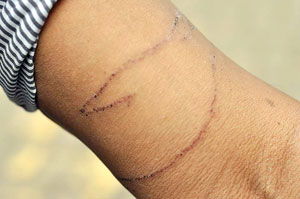
Box jellyfish sting 4 days old
In this interview with Dr. Malik Fernando, who is not only a medical doctor but also a diver and naturalist, MediScene looks at the creatures lurking in the sea (marine stingers) and what could happen if humans come into contact with them.
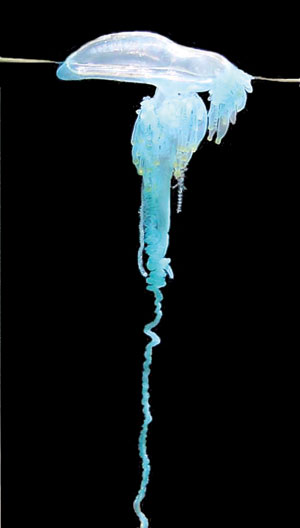
Portuguese man o' war
Some who get into the sea, whether for that tempting swim amidst the turquoise waters, just to sit on the sand and let the foamy ripples wash over them or use this vast resource for their livelihood may face marine stingers.
This is why there is a need to focus on the people at risk, the effects of such envenomation, treatment – if any is needed and prevention of harm.
The people at risk include swimmers and other sea bathers, reef walkers, waders, recreational divers, ornamental fish, chank and sea cucumber collectors and fishermen including deep sea net fishermen and wading fishermen in lagoons and estuaries.
There could be two kinds of animals among marine stingers. They are invertebrates (animals without backbones) and vertebrates (animals with backbones).
Before dealing with what measures to take once a person is stung, there are a few simple actions which could help prevent such incidents. They include:
- Being aware of your surroundings and possible dangers.
- Wearing protective clothing – rash guards, gloves and shoes.
- Being careful when wading in shallow water sand bottoms where stingrays rest. Look where you put your feet on rocky bottoms.
- n Picking up sea snakes by their tails. Do not try to catch them under water.
Here the focus will be on marine animals that are capable of ‘envenoming’ humans, excluding biting animals such as sharks and barracuda but including sea snakes.
‘Envenoming’ takes place when venom gets introduced into the body through a puncturing of the skin, while ‘poisoning’ is the introduction of a toxic substance into the body through the respiratory tract (by inhaling) or into the stomach by swallowing.
The effects of envenoming could include:
- Local effects – pain, local swelling (in the affected area) and erythema (redness)
- General effects – allergic reactions may occur needing antihistamines and corticosteroids. Anaphylaxis (a serious and life-threatening allergic reaction) is rare in Sri Lanka.
- Retained foreign bodies – the sting may leave behind a foreign body (a piece of the spine) in the affected area.
- Wound infection and granulomas – a small inflamed collection of cells
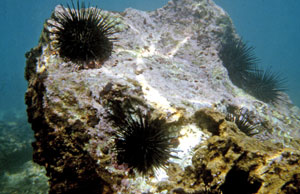
Black-spined sea urchin
The foremost concern should be to prevent the victim from drowning. There is also a need to reassure the victim and ensure that he/she has adequate rest.
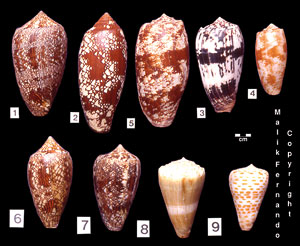
Venomous cones
Thereafter, any adherent foreign body (such as jellyfish tentacles) should be removed without touching them and pain relief provided. This will include ice for jellyfish stings and hot water for fish stings. The application of lignocaine ointment may be effective.
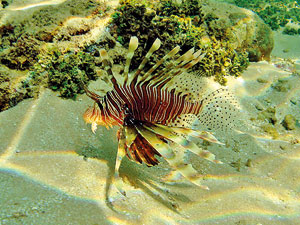
Lion fish
Usually, the pain settles within 2 hours except following a (Portuguese man-o-war) sting. Generally no specific treatment is necessary for jellyfish stings.
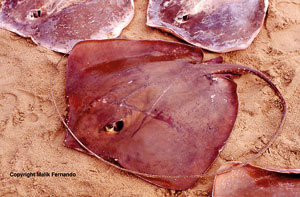
Stingray
| Signs, first-aid & management The invertebrates under the spotlight are:
Physalia stings There is no specific treatment, unless there is manifestation of allergic symptoms. Ice packs are effective in relieving the pain. 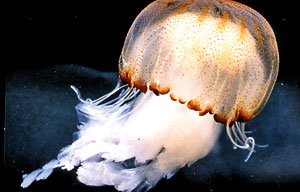 Compass jellyfish True jellyfish stingers If stung by a Lion’s mane jellyfish, there would be minimal pain and mild urticarial reaction. A Compass jellyfish sting, though, would cause a painful sting and urticarial reaction which gets resolved within about 2 hours. However, in the case of a Box jellyfish, there will be severe pain and a linear urticarial reaction. The pain subsides spontaneously leaving a pigmented scar that resolves, untreated, over 3-4 months. The first aid would entail the careful removal of adherent tentacles and pain relief with ice packs or a local anaesthetic application. There is a need to reassure the victim, with advice to keep still and rest. Hospitalisation would be needed only if there is a severe allergic reaction and generalized symptoms such as collapse and breathing difficulty. Sea urchins There are a few potentially troublesome species and include Asthenosoma – very venomous; Toxopneustes pileolus – venomous; Diodema setosum – venomous; and Stomopneustes variolaris – not venomous. Stomopneustes variolaris is the common black-spined sea urchin that people may step on and injure their feet. Although not venomous they cause pain and the injuries may get infected, usually needing surgical removal of embedded pieces. Starfish The crown-of-thorns starfish is beset with hundreds of barbed spines on its upper surface. They eat corals and have to be removed by hand during population blooms. The unwary diver who comes into contact with the spines will get a very painful injury that would need surgical treatment. Molluscs The sea shells – really marine snails – known as cone shells are pretty collectors’ items. Some of them have venom potentially fatal to a human. They belong to the group of textile cones that are fish eaters, the venom needed to subdue fish before they are swallowed. These shells should not be handled when alive. The vertebrates are:
Sea snakes They can easily be confused with marine eels (gal gulla in Sinhala). There are 15 species of sea snakes in Sri Lanka, with the most dangerous being Hydrophis schistosus found in the Puttalam lagoon and estuaries. There have been proven fatalities after being bitten by this sea snake. The symptoms include muscle pains, paralysis and myoglobinuria (passing dark coloured urine). It has been found that the polyvalent anti-venom used for land snake envenoming is of no use when bitten by this sea snake. Treatment is hospital-based, managing electrolyte and fluid balance and general supportive therapy till recovery takes place. Fish The Lion fish has venomous spines on its fins and can cause injury. Usually, ornamental fish collectors who are careless get injured when handling them. Meanwhile, stingrays have long saw-toothed spines at the base of the tail on the upper side. They rest on sand bottoms, often near the shore in calm water and sea bathers can accidentally step on them. The stingray reacts by arching its tail with the spines erect, which may pierce the ankle or foot causing a severe lacerated puncture. The tissue containing venom glands covering the spine rubs off into the wound causing great pain. Surgical treatment is usually required. | |
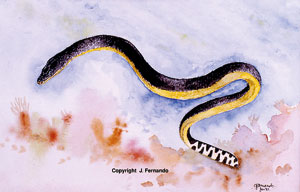
Yellow-bellied sea snake


